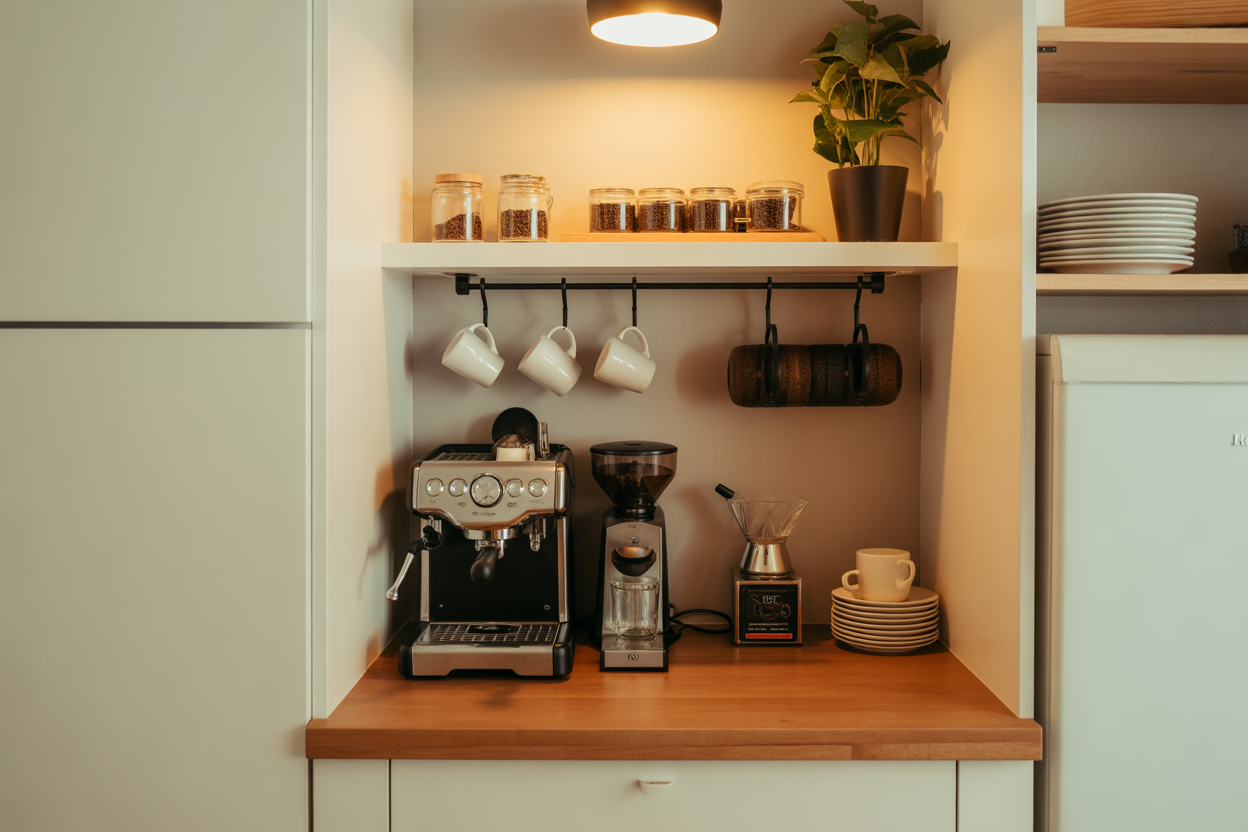
The modern kitchen has evolved into a psychological sanctuary where morning rituals anchor our daily routines. Yet square footage remains elusive, especially when designing what I call “micro-ritual zones”—dedicated spaces for cherished habits.
In order to come up with the very specific design ideas, we create most designs with the assistance of state-of-the-art AI interior design software.
Your coffee corner shouldn’t be an afterthought squeezed between clutter; it deserves intentional design that transforms overlooked spaces into functional sanctuaries. These fifteen solutions prove that spatial constraints can inspire creativity, turning awkward corners into beautifully curated stations that spark joy each morning while maximizing every precious inch.
Corner Floating Shelf Coffee Station

Transform dead corner space into vertical real estate with strategically placed floating shelves that create what I term “ascending functionality.” Install two or three shelves at varying heights to accommodate your coffee maker on the lowest tier, mugs hanging from underneath hooks, and supplies ascending upward. This configuration draws the eye vertically while keeping countertops clear—a psychological trick that makes kitchens feel more expansive. Choose shelves with rounded edges to soften the corner’s geometry and prevent bumped elbows during groggy morning routines.
Two-Tier Lazy Susan Coffee Station

The lazy Susan revolutionizes corner accessibility by eliminating the dreaded reach-and-fumble motion that plagues L-shaped spaces. Position a two-tiered rotating organizer to house your coffee maker on the bottom level while corralling syrups, sugars, and stirrers on top. This circular solution creates what I call “democratic accessibility”—everything receives equal attention with a simple spin. The rotating motion also adds a subtle element of interactive design that transforms routine coffee preparation into a more engaging sensory experience each morning.
Rolling Cart Coffee Station Solution
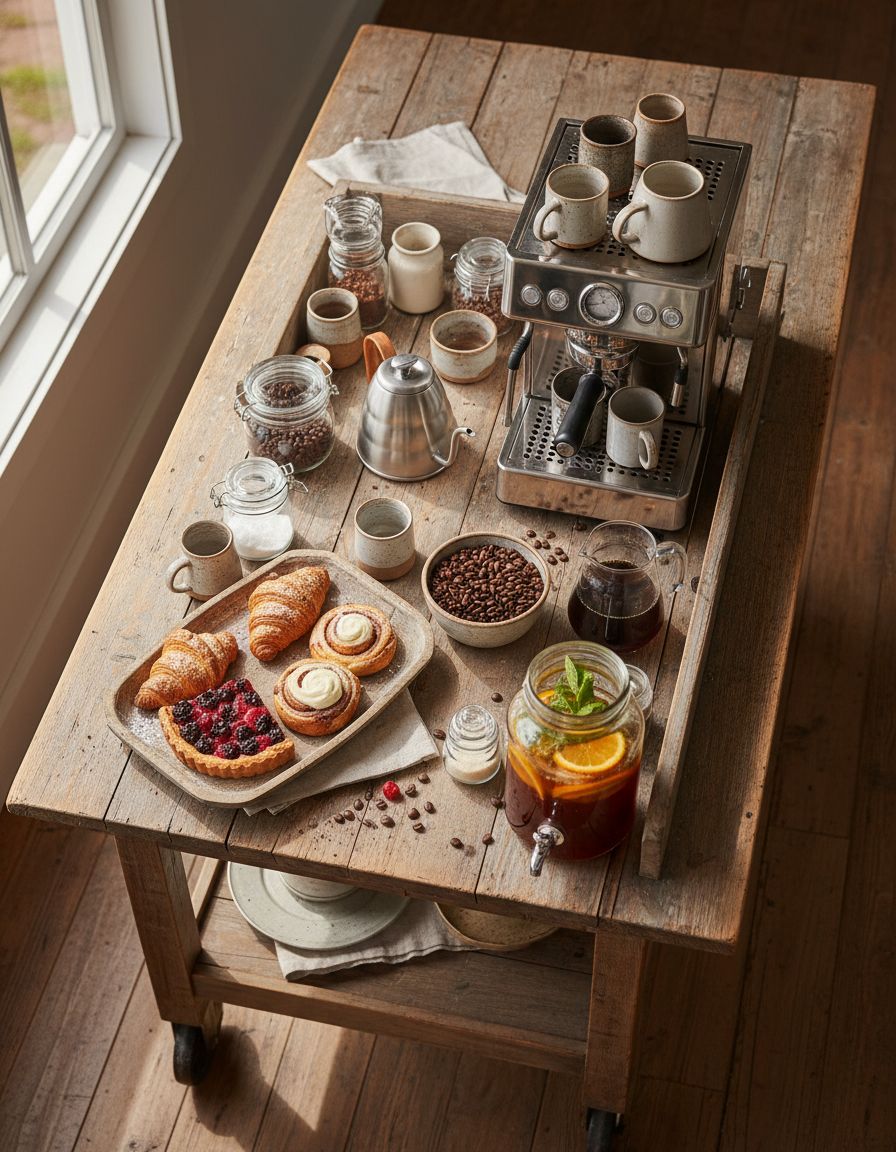
Mobility transforms limitations into advantages with a compact rolling cart that embraces flexibility over permanence. This approach suits renters or serial redecorators who crave adaptability in their “transitional design psychology.” Stock your cart with essentials, then roll it precisely where needed—beside the sink for filling, near the table for serving, or tucked into a corner when not brewing. Choose a cart with locking wheels and metal construction for stability, creating a professional-grade station that rivals built-in installations while preserving precious floor space.
Wall-Mounted Coffee Station with Hooks
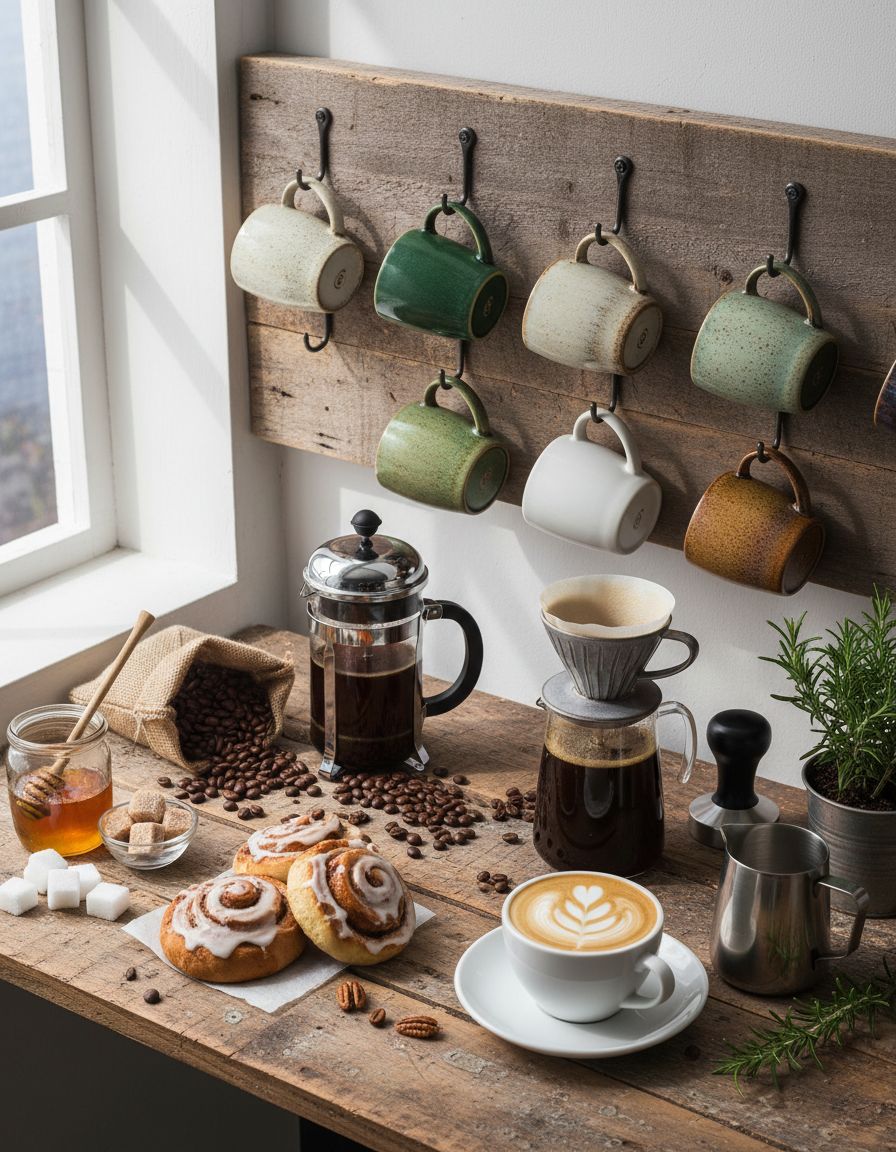
Vertical mounting liberates counter space entirely while creating an artful display that celebrates coffee culture as kitchen décor. Install a narrow shelf or sturdy board directly to your corner walls, mounting your single-serve brewer or pour-over station securely. Below, add brass or wooden hooks for mugs that become sculptural elements when not in use. This configuration exemplifies “functional decoration”—a design philosophy where every visible element serves dual purposes, feeding both practical needs and aesthetic desires simultaneously.
Narrow Console Table Coffee Station

Repurpose a slim console table—typically 10 to 12 inches deep—to create a surprisingly complete coffee station without sacrificing walkway clearance. Position it diagonally across a corner or flush against an underutilized wall segment. The shallow depth prevents intrusion while the surface area accommodates essential equipment beautifully. I call this “borrowed space design,” where furniture typically designated for entryways finds new purpose, proving that creative repurposing often outperforms conventional storage solutions in cramped quarters.
Under-Cabinet Coffee Station Setup

Capitalize on neglected vertical space beneath upper cabinets by installing a dedicated coffee zone that exploits what I term “shadow real estate.” Mount your coffee maker on the counter directly below cabinets, then add under-cabinet lighting to eliminate the dreary cave effect. Attach small baskets or magnetic containers to cabinet undersides for filters and pods. This layered approach creates depth perception that makes corners feel purposeful rather than forgotten, while task lighting enhances morning functionality when ambient light fails.
Magnetic Coffee Station on Refrigerator Side

The refrigerator’s side panel offers untapped potential for coffee storage through magnetic accessories that require zero installation. Attach magnetic shelves, hooks, and containers to house coffee supplies, leaving only your brewer on the adjacent counter. This innovative approach works beautifully in galley kitchens where the refrigerator end creates a natural corner. The result is “opportunistic design”—spotting potential in overlooked surfaces and transforming appliance sides into functional, visually cohesive organizational systems.
Corner Cabinet Coffee Station Conversion
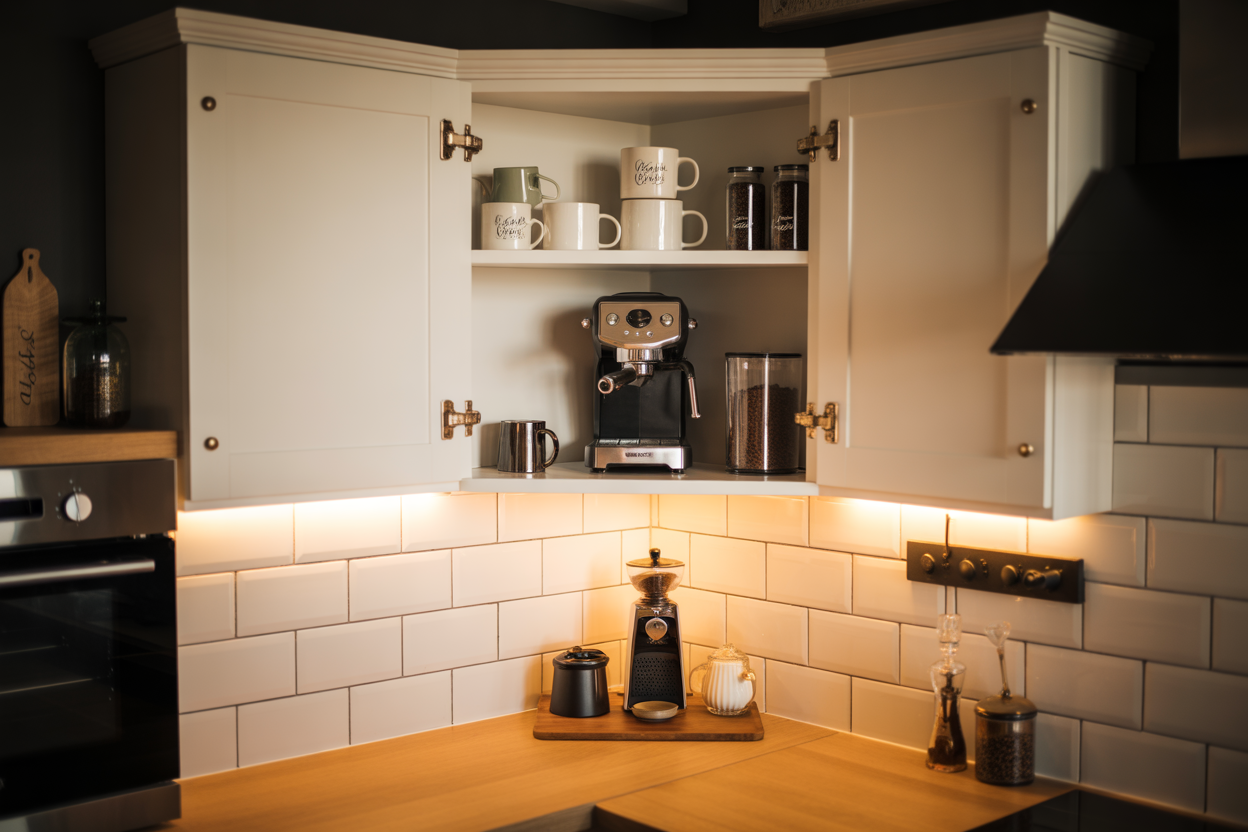
Dedicate one corner base cabinet exclusively to coffee by removing the door and installing interior outlets for seamless appliance integration. Add a pullout shelf for easy brewer access and interior hooks for mugs. This “cabinet reveal” technique transforms closed storage into open, accessible stations while maintaining a somewhat contained appearance. When not brewing, the recessed positioning keeps equipment visually minimal—satisfying our psychological need for order while preserving complete functionality within arm’s reach.
Pegboard Coffee Station Organizer
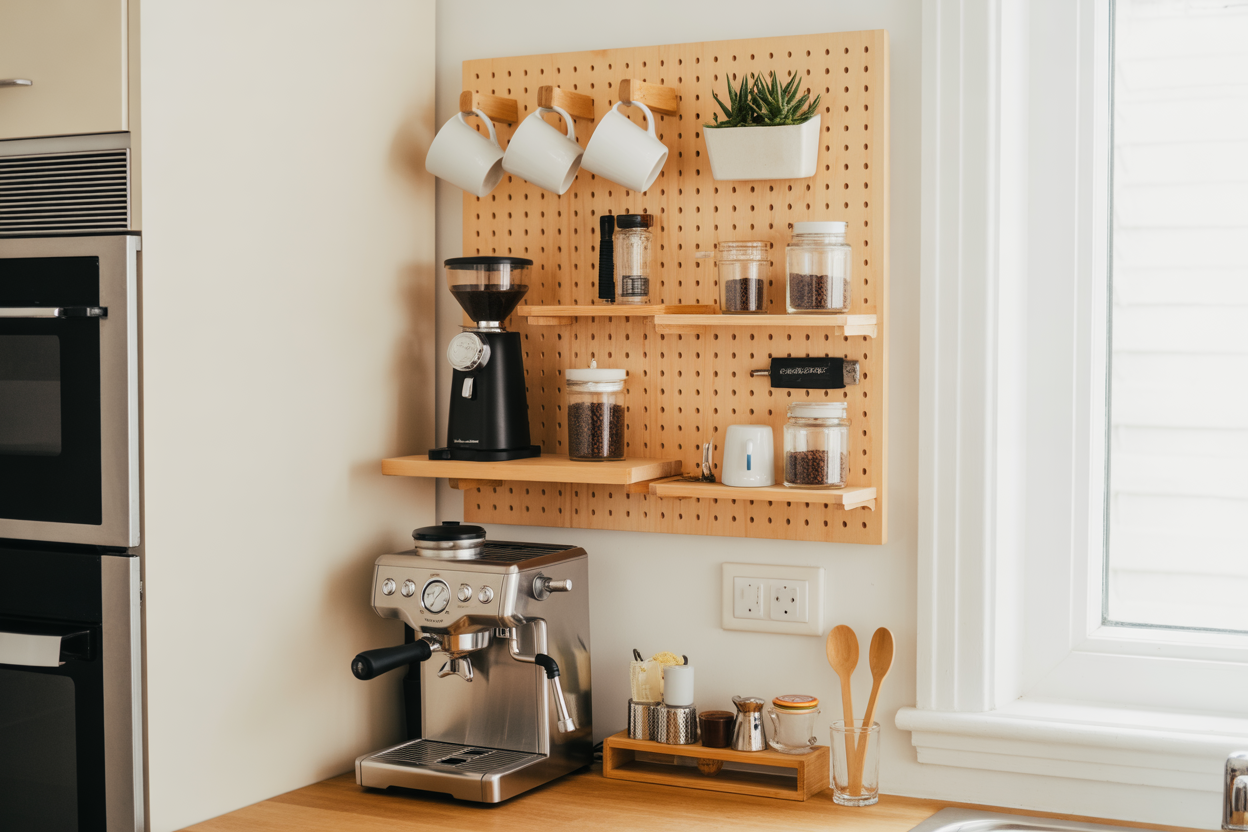
Install a corner pegboard panel to create endlessly customizable storage that adapts as your coffee collection evolves. Paint it complementary colors or leave natural wood for warmth, then arrange hooks, shelves, and containers to hold everything from mugs to milk frothers. Pegboard embodies “evolutionary design”—configurations that mature with changing needs rather than becoming obsolete. The visible organization also provides psychological satisfaction; seeing your complete coffee arsenal displayed beautifully enhances the intentionality of your morning ritual.
Tray-Based Portable Coffee Station

A beautifully curated tray transforms any corner surface into an instant coffee station while maintaining portability and visual cohesion. Select a tray slightly larger than your coffee maker’s footprint, then arrange equipment, supplies, and a small plant or decorative element for balance. This approach suits temporary living situations or minimalists who resist permanent installations. The tray’s boundary creates “psychological containment,” signaling designated purpose while preventing coffee paraphernalia from spreading chaotically across counters.
Vertical Tower Coffee Station Design
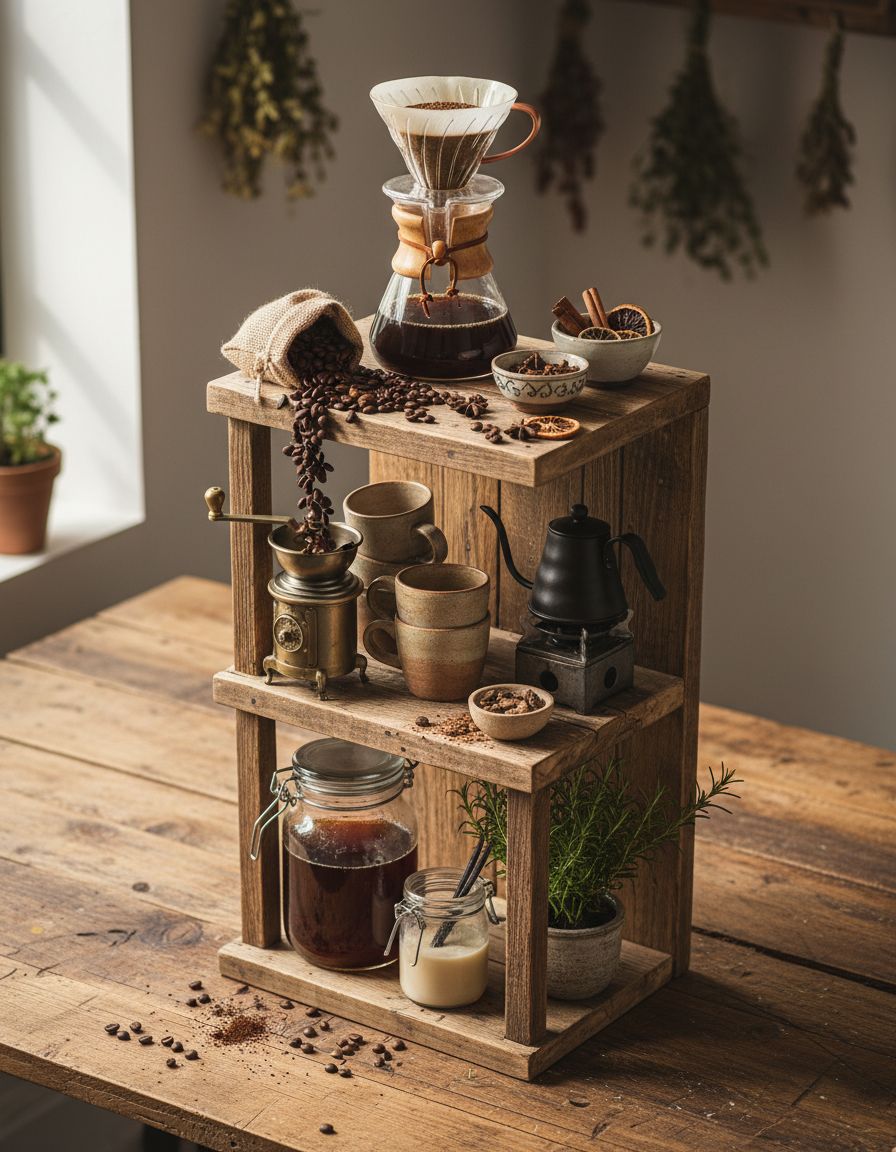
Purpose-built vertical towers maximize upward space through stacked storage compartments specifically proportioned for coffee essentials. These slim units—often just 12 inches wide—fit snugly into corners while providing multiple dedicated levels for brewers, mugs, beans, and accessories. The tower format creates what I call “compressed abundance,” where thoughtful design allows extensive storage within minimal square footage. Choose models with open shelving for accessibility or closed cabinets for a streamlined appearance that conceals visual clutter.
Appliance Garage Coffee Station Hideaway

Install a tambour door or hinged cabinet door to create a disappearing coffee station that reveals itself only during use. This sophisticated solution houses your complete setup behind closed doors, maintaining pristine countertops for households where minimalism reigns supreme. The concealment offers “ceremonial reveal psychology”—opening the garage becomes an intentional act that marks the transition from sleep to wakefulness. Interior electrical outlets ensure everything remains plugged in and ready despite its hidden status.
Window Sill Coffee Station Arrangement
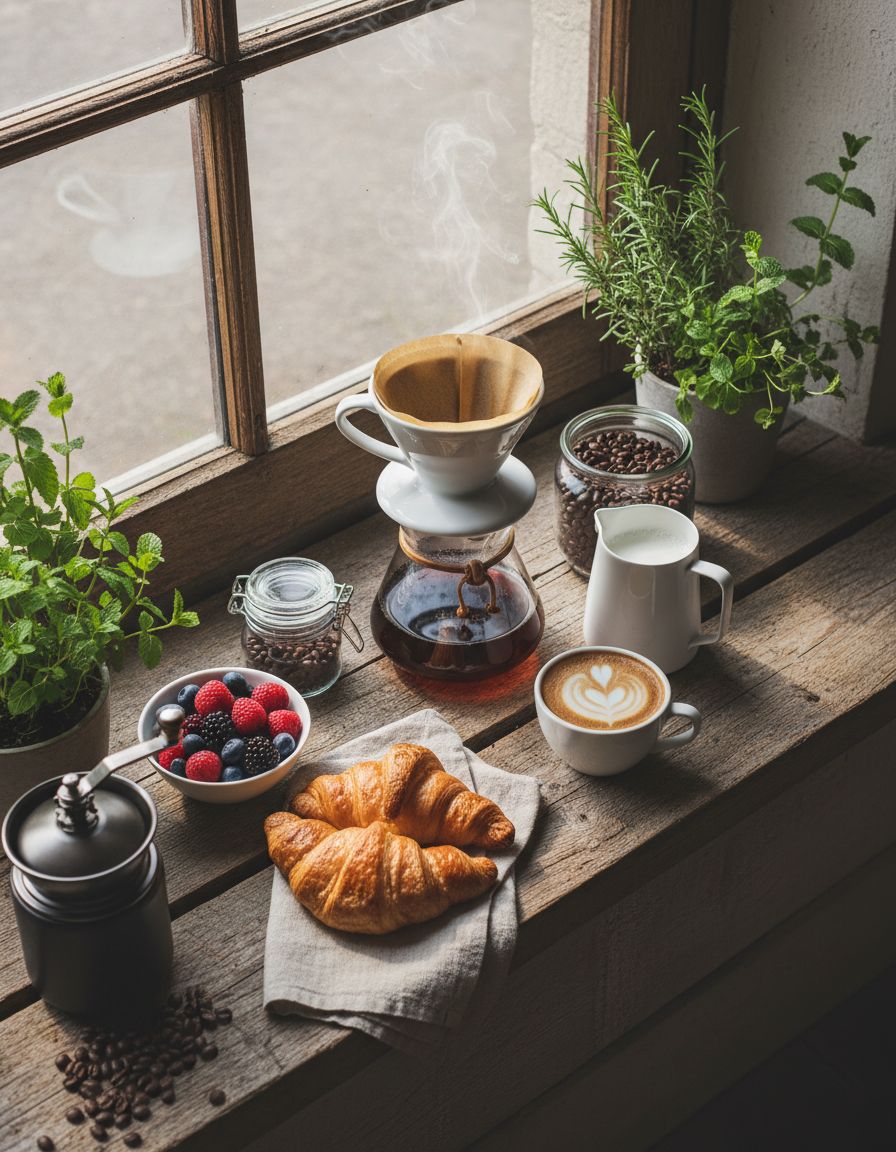
Deep window sills in older homes or corner windows provide unexpected platforms for compact coffee stations bathed in natural light. Position a small brewer beside the window, using the sill for mugs and a canister of beans that benefit from morning sunlight streaming through glass. This configuration taps into “biophilic design principles,” connecting daily rituals with natural elements and outdoor views. The psychological boost from sunlight exposure during coffee preparation enhances mood far beyond caffeine’s chemical effects alone.
L-Shaped Corner Coffee Station Counter
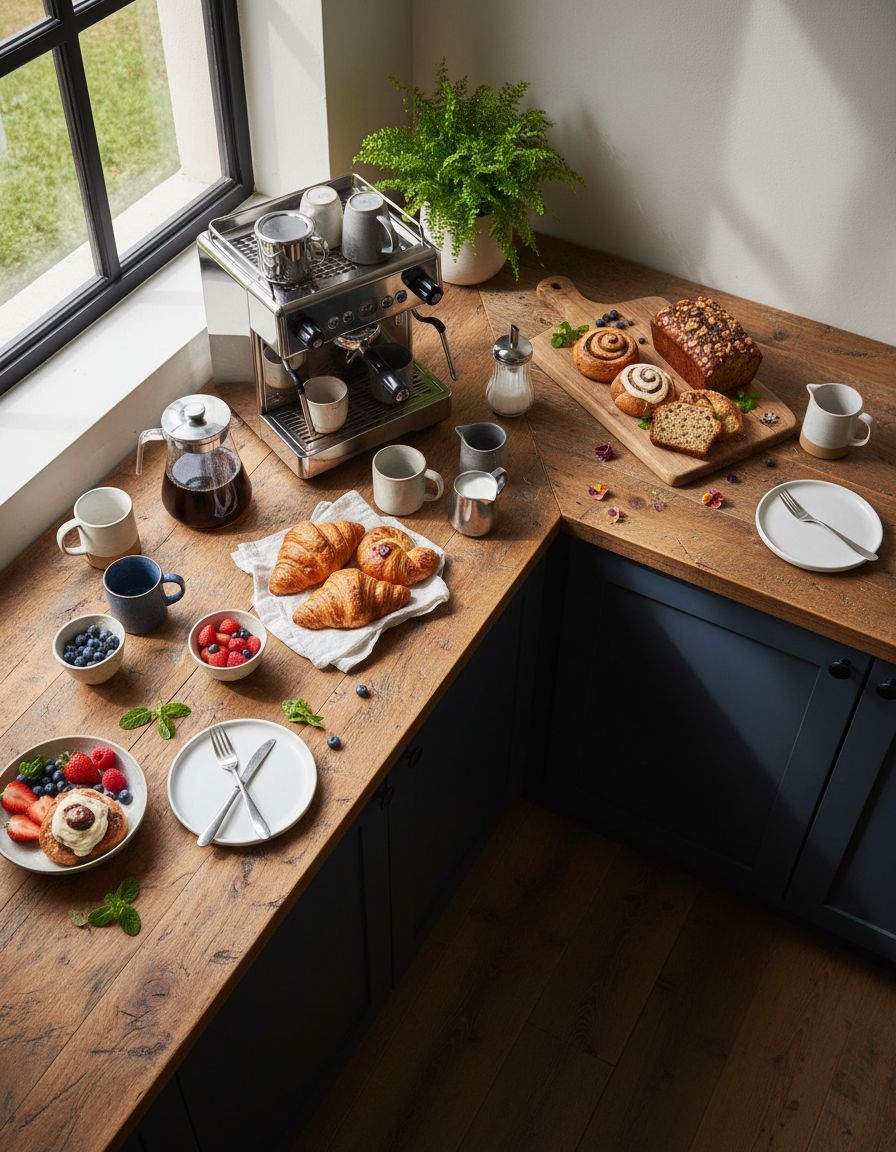
For those with slightly more corner space, install a small L-shaped countertop extension that creates dedicated coffee real estate without full cabinetry. This mini-counter juts from the wall at 15 to 20 inches, providing just enough surface for equipment and preparation space. Underneath, add floating shelves or leave open for visual lightness. This approach demonstrates “architectural punctuation”—small structural additions that define zones within open spaces, granting psychological importance to activities we value most.
Drawer Pullout Coffee Station System
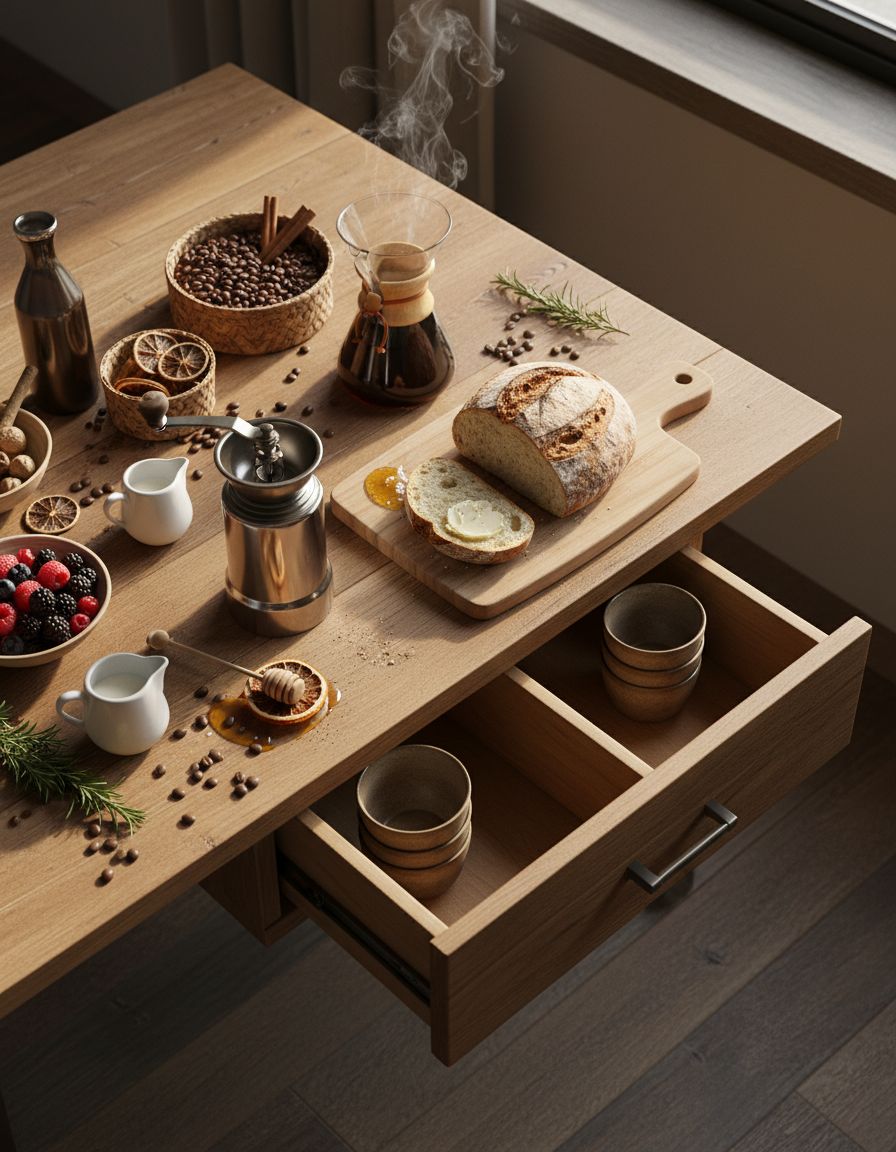
Convert a deep base cabinet drawer into a pullout platform that houses your coffee maker on a sliding tray with electrical outlets installed inside. When needed, pull the drawer open to reveal your complete station; afterward, close it to reclaim counter space entirely. This represents “concealed functionality” at its finest—equipment disappears completely yet remains immediately accessible. The mechanism particularly suits households balancing multiple kitchen users with competing spatial needs and aesthetic preferences throughout the day.






